Dear traveller, you may ask with some anticipation, what lies beyond the gates of Greifshold? We will travel to a lumbering village, the quaint fishing village Breka, ruins of steadfast castles taken back by tree and root and learn of the worshipers of Reigaro, the principal deity of the settlers.
Oak Bridge
Oak Bridge is a small lumbering village just west of Greifshold across a stone bridge spanning the river Aharôt. The bridge has the peculiar name Three Logs. One of the woodcutters told me that the bridge was originally little more than a few sturdy logs bound together and placed across the stream. Later illustrious Aldrich erected a stone bridge in their place, but the name remained unchanged.
Oak Bridge is less a village than a spread out collection of farmsteads, blockhouses and tents. The woodcutters relocate every spring after they cut down the trees in their vicinity. In the early years of the settlement it was of great import for Greifhold’s growth. Wood from the forest and stones salvaged from ruins of The First dotted along the coast were used to build the walls and towers of Greifshold. A quarry was also established in The Balding Hills, but later abandoned.
Oak Bridge, however, remained an important supplier of fire wood and wood to build and maintain whaling ships. The native trees are exceptionally sturdy and both the wood and sap are highly regarded in the empire, as are furnishings made from this wood. I surmise that Aldrich’s desire to establish docks south of Greifshold was due to a wish to facilitate transport of wood to the shipyard, instead of using Breka a good day’s travel east, two days when rain turns the road into slick mud.
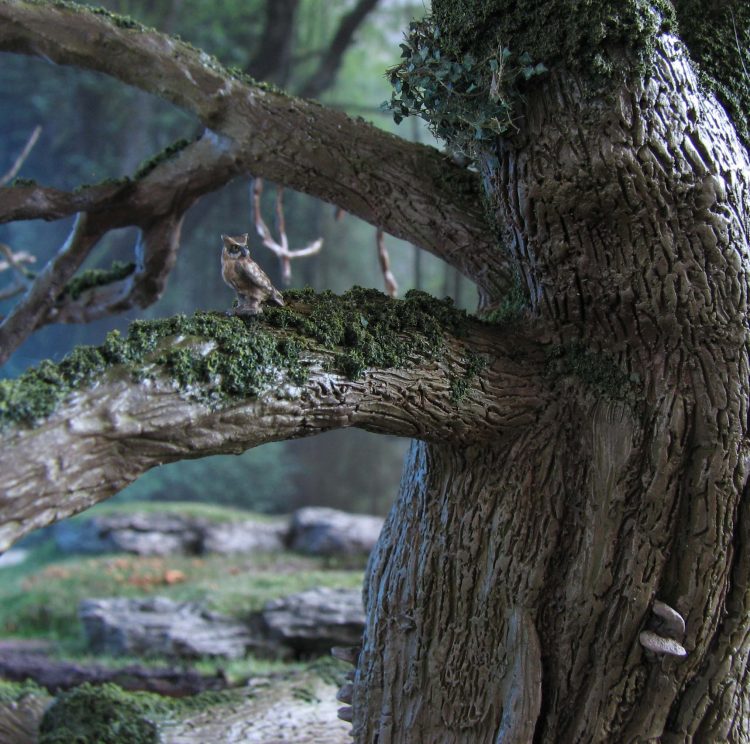
Breka
Breka is a small fishing village located half a day’s journey east of Greifshold. An earthen path follows the bent of Serpent Bay through sparse forest and will guide you to this small village. Now, dear traveler, you may think a fishing village has little to offer in amenities, historical sites and comfort, but rest assured that Breka offers much and more to the intrepid traveler.
I have it on good notice that Breka precedes both Greifshold and the First Temple of Reigaro, in fact making it one of the oldest outposts of civilisation on this continent. There is some friendly rivalry about this fact with the small hamlet of Wigald’s Point beyond the mountains to the east of Breka on the tip of Wyrm’s Claw peninsula.
Breka was established by a whaler captain named Trostig. Little more than a shack and trypot in the beginning, it soon housed his crew in whalebone huts. Being protected from harsh winds by the foothills of the Wyrmblood Range and offering a berthing place for ships in winter, soon enough more whalers arrived. Some traded with the Hengemen, some even took wives among them and settled in Breka.
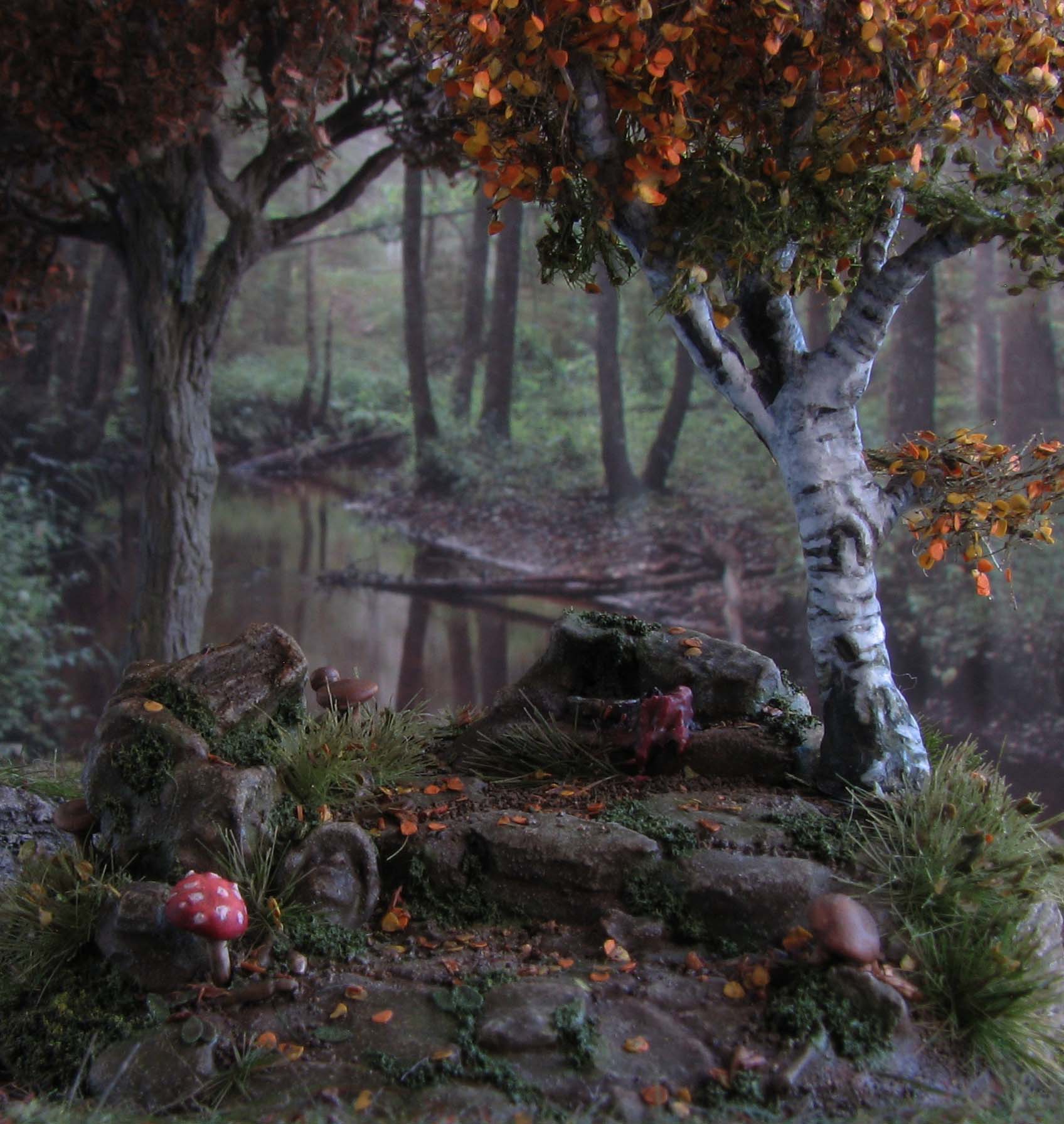
You will know that such prosperity cannot last forever. Whales disappeared from Serpent Bay and whalers moved to the waters around Wyrm’s Claw. Some of the older sailors I spoke to claim that Keto, she who slumbers in the dark abyss of the sea, awoke and gorged herself on blubber and whale flesh. Some whalers corroborate this tale and one claims to have survived an attack by this creature, granted this occurred after five glasses of Ettin’s Breath.
The families, including Trostig, remained and made a living fishing and hunting. When Greifshold was established Breka became an important harbour and supplier of food for the growing city, and it will not surprise you to hear that they welcomed Aldrich and readily pledged allegiance.
The “Blubber’s Pot” and other ammenities
Trostig’s granddaughter Brea still owns the local tavern Blubber’s Pot and despite its name you can expect good ale, a warm meal and simple, yet comfortable lodgings. I recommend a room facing south to catch a breath of salty air in the morning and a hearty “Hengemen Stew” with fresh venison and chanterelles for breakfast.
You will also find a general store that outfits the fishermen and whalers that berth their ships over winter, but for a weapon- or armoursmith you will need to travel to Greifshold. Breka is also famous for the Arwanach family’s tannery. I myself bought a splendid fur cloak for a fair price and you will not find a better tanner in the Margravate. Ask for Maida, as she is the most skilled of the five siblings.
Arlo of Werta’s resting place and the old donjon
Arlo of Werta’s remains, Chaplain of the Black Candle and revered figure in the history of these lands, can be honoured during a visit to the village. A simple, well maintained grave on the outskirts of Breka is adorned by a plinth bearing the following inscription: “Here lies Arlo of Werta. Chaplain of the Black Candle. Servant of Reigaro. Bearer of the Green Flame. He brought Reigaro’s light to those that live in darkness. May he serve him in the Beyond.”
After the First Temple of Reigaro had to be abandoned his servants moved to Breka. Soon after Aldrich’s landing the order build a new temple in Greifshold to honour Arlo and Reigaro. A small shrine to Reigaro is located close to the tannery. A single follower of Reigaro provides services to the villagers and travelers alike. Herbs, ointments and remedies for illnesses can be purchased should you require them.
During Herleva’s rebellion Breka had to provide supplies and mount a defence against the Hengemen. I spoke to an old veteran who told me about the donjon they build to protect the people, ever loyal to Aldrich. Yet Herleva’s men never attacked Breka. The donjon is well maintained, but was used to store grain when I visited.
Gelosul, the Yellow Pillars
A most interesting site lies north of the village on the southern side of a gentle hill: Gelosul in the language of the Hengemen or The Yellow Pillars in our tongue. Hewn from single blocks of stone these pillars resemble our temples, but lack their refinement. Still an impressive feat for such primitive people. They are covered in a yellow moss, hence the name. The Hengemen are protective of this site, so tread carefully. I heard some rumours at the Blubber’s Pot suggesting these pillars mark an ancient burial site, the hill itself a barrow.
A small boy asked for a coin in exchange for showing me the head of Arlo. Suffice to say the boy did not possess the head of such a revered figure in the history of the Margravate. The head he showed me was made of stone, finely hewn and far too refined to be of Hengemen make. Some more coin made the boy talk and he apparently found it in the river to the west of the village. I was tempted to lead an expedition upstream, but with stories about the Hengemen attacking hunters and traders I decided to forgo such a venture. It is in the realm of possibility that a site similar to Gelosul can be found upstream.
Griffonwatch
Now lying in ruins Griffonwatch was the seat of House Claiborne, under the gentle rule of Calder Claiborne. After Aldrich subjugated the unruly Hengemen and was granted the title of Margrave, he made known that any worthy knight of the empire would receive land and title if he and his household would pledge allegiance and defend the northern territories of the Margravate against the Hengemen.
I have it on good authority by the late Gilford of Jorburg, advisor, scribe and historian of the Margrave, that few were deemed worthy of such a position by Aldrich, but only House Claiborne and House Payton of Wyrmrock – now known by the name Herleva’s Stand – were given land and the title of Burgrave and Wildgrave respectively.
I spoke to travellers that deal with the Hengemen and found that the ruins of Griffonwatch are slowly, but steadily taken back by the forest. Where once the smell of ale and mutton filled the air, where gentle song echoed in the halls, now moss and root dwell and saplings grow to fearsome trees.
During Herleva’s rebellion Griffonwatch was the first to fall. The siege lasted only a few days, as servants of House Claiborne opened a secret passage for the Hengemen. I agree with Gilford that these servants must have been of Hengemen blood. This tale shows that treachery is no stranger to these people and you should not trust them lightly. The entire family and household of Claiborne were massacred, only a handful of bannermen escaped to tell the tale. After the siege there were some rumours that one of the sons of the Burgrave, Tyne Claiborne, survived and was held captive by the rebels, but Gilford rightly discredits these rumours as gossip, after all he did not surface in the years since the rebellion and he was neither found after the siege of Wyrmrock.
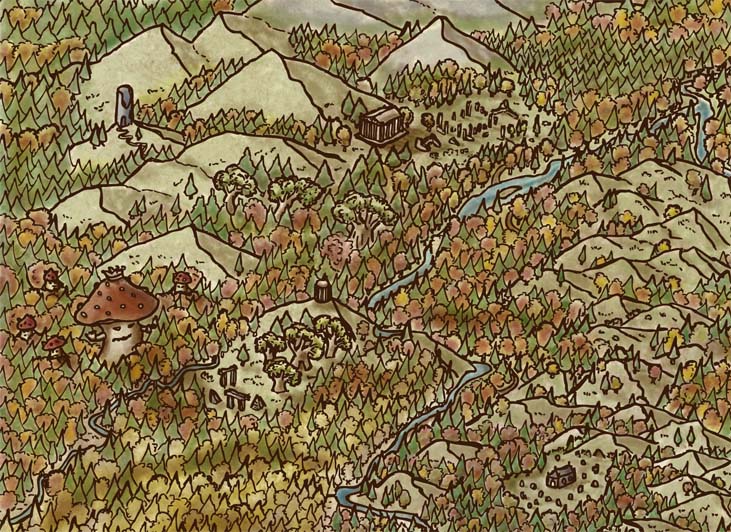
Herleva’s Stand
This place, first known as Wyrmrock, the seat of House Payton, saw two tragedies in short succession. A small and loyal house, known for its prowess in battle, the family suffered tremendous losses during Herleva’s rebellion. All five sons of Wildgrave Gower Payton fell during the battle of the Bloodford. Gower, crazed by grief slung himself from the highest tower of Wyrmrock, leaving only servants and his wife Golda. Wyrmrock was abandoned and House Payton took refuge in Greifshold, where it remains to this day.
Golda, so I heard from a barber, considers to marry a local merchant. A most unsuitable match, but given the dearth of noblemen in Greifshold it may well have some credence. Should you have the opportunity ask one of Trip’s Troupe to perform “Payton’s Lament”. It is a very sombre piece, but the melody is beautiful and a talented singer can move an entire room to tears.
Herleva’s rebellion
After some success at Griffonwatch and Bloodford Herleva’s rebellion stagnated, unable to take Greifshold. Some speculate it was due to infighting. The Hengemen have no king. They stand divided and some of the soldiers I spoke to that fought in the rebellion report of deserters and collaborators that weakened and divided Herleva’s forces. There is little known about her. Some rumours make their rounds: she wanted to avenge her family or she was driven by visions and voices. I even heard she was a bastard of Aldrich that challenged Elswyth. I must not tell you that none of these rumours are supported by any evidence.
After five years of small scale skirmishes and raids Aldrich, tired of losing men and supplies, led a final campaign against Herleva. With the aid of mercenaries he was able to draw the rebels out, raiding their camp sites. What little remained of her people retreated to Wyrmrock. Aldrich was keen to crush the rebellion and laid siege to Wyrmrock. The siege only lasted a few weeks, with the Hengemen unable to procure enough supplies to endure any longer.
Aldrich led the final charge himself on his fierce mount Ebonquill. I must not tell you that this was a sight to behold. Many veterans of this last battle described to me the awe they felt when the beast picked the Hengemen of the walls and let them fall to their death. Herleva must have been a charismatic leader, yet she gave Aldrich what he hoped for: a battlefield that would benefit his Griffon and the mercenaries, well-versed in siege warfare. A grief error of judgement, but typical of the Hengemen. They are rash in their decisions and lack understanding of tactics and strategy.
Herleva’s Tears
The rebellion and Herleva died this day. The remains of her tared head are still displayed on Greifshold’s walls. It is said the last words she uttered were “I shed bloody tears for my people, may they forgive me.” The commoners now refer to the three lakes that surround Herleva’s Stand as Herleva’s Tears. She also became something like a folk hero among the Hengemen. Edwin told me they sing songs about her deeds and believe she will one day return to set them free. They are stubborn people, but they will need to bend the knee if they want amicable relations with the Margravine. Such delusions will not help their cause.

Soldier’s Rest
After the battle of Bloodford the fallen of both sides had to be laid to rest and a mass grave was hastily dug. When the rebellion ended the Margrave issued the command to exhume the bones of the fallen.
The area now called Soldier’s Rest was close to the battle site and already used by the Hengemen as a graveyard of sorts, with nearby caves being the final resting place for their dead. Given it was impossible to tell Hengemen from one of his bannermen Aldrich decided to use this place to bury the fallen. A gesture of goodwill as Gilford of Jorburg suggests. A crypt to place any single bones and skulls was built, too.
It is said the Hengemen still use the caves, but the graveyard is not used anymore by the people of Greifshold, as they prefer a site within the city walls. A hunter that I befriended told me about strange lights in the forest at night close to this place and I would advise to avoid it altogether. Some say Reigaro’s light does not shine there.
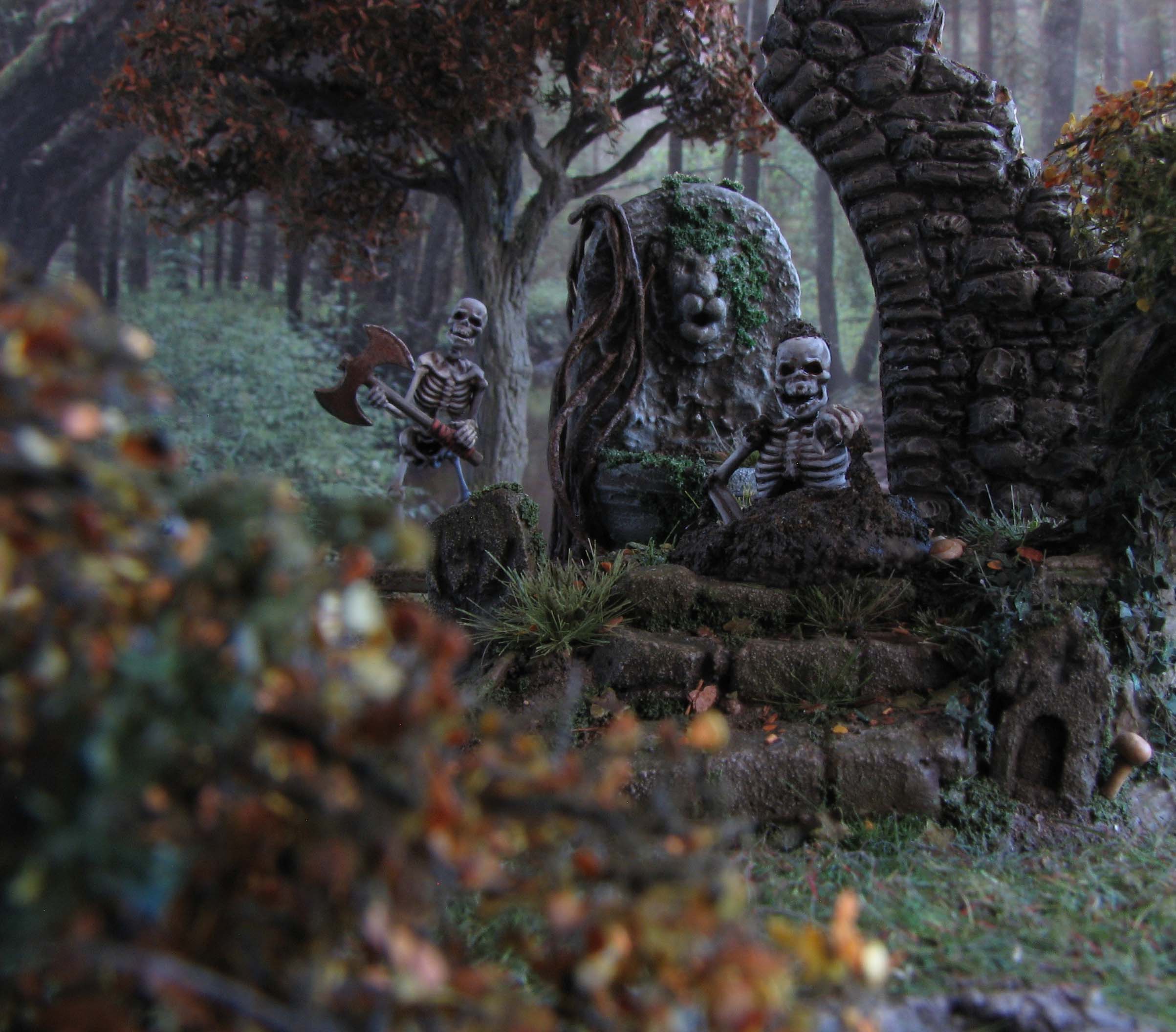
The First Temple of Reigaro & Starspire
Not much is known about the Black Candles efforts to proselytize the Hengemen. They arrived in Breka well before Aldrich landed his expeditionary force. The Black Candle is one of the twelve Candles that spread and nourish Reigaro’s light: The flame of a candle burns slow and steady. Other candles can be lit, until all the darkness in the world dissipates. It is thus, at least so his servants told me, that the Candles venture forth into the world to spread his light, with a gentle hand and patience.
I understand Reigaro is the principal diety of the empire, the god of light, wisdom and the hearth. Lesser deities are worshipped by the people of Greifshold, but they do so in private house shrines.
Soon after their arrival the Black Candle established a temple to Reigaro on an ancient site of The First deep inside the forest. It is unclear why they chose this site, but they may have felt that this place is of significance to the Hengemen and thus a good place to spread Reigaro’s word. I understand the Black Candle was forced to abandon the temple, but none of their followers are forthcoming with information on this matter.
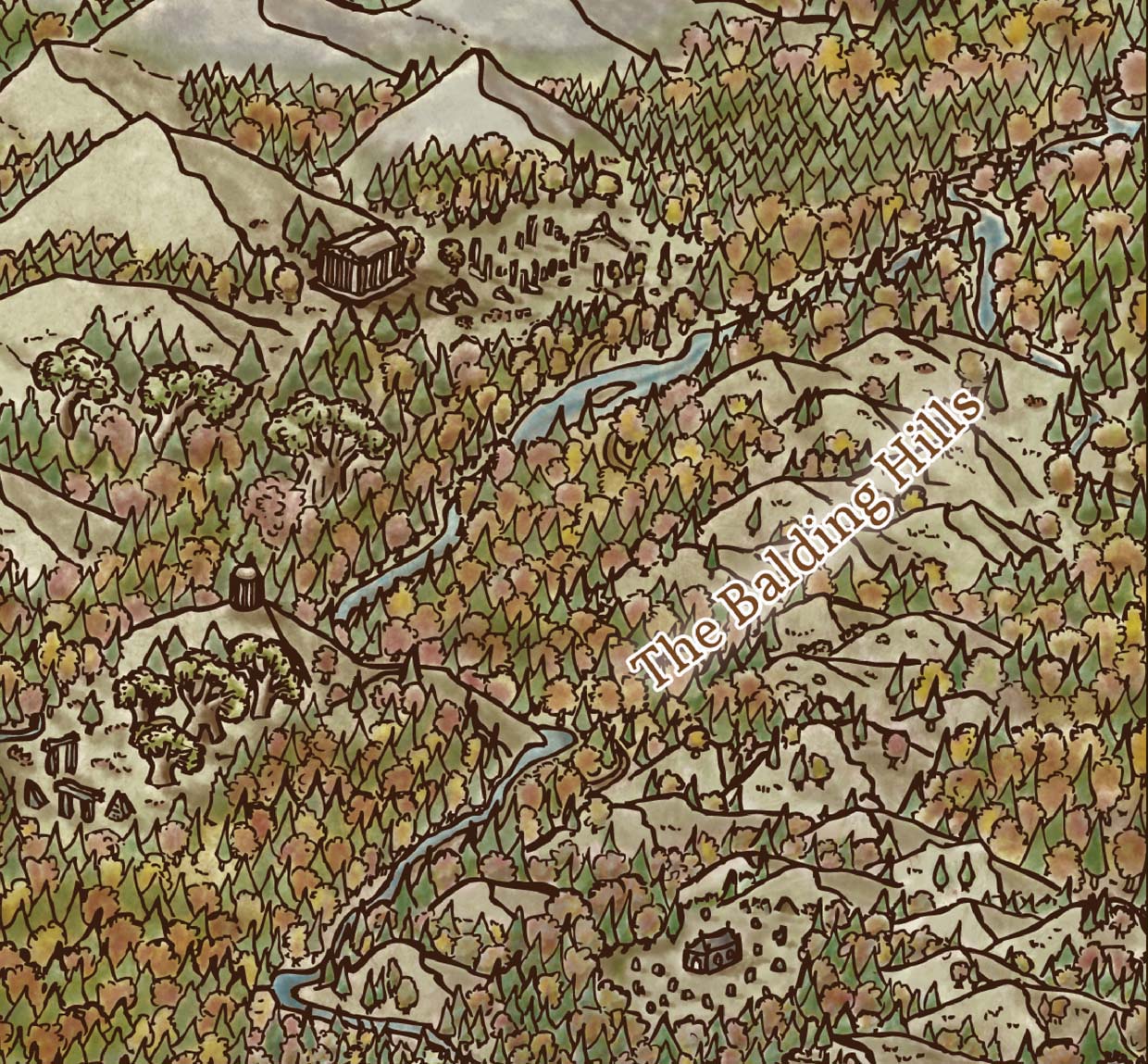
I was not able to convince Gilford of Jorburg to let me handle the Chronicle of the Black Candle. He suggested it is too fragile to be handled by untrained hands and I would need to wait some years until his transcription is finished. Unfortunately he died before he achieved this goal and Margravine Elswyth was not willing to let me consult his written legacy.
On clear days one can see Starspire from one of Greifshold’s western towers, the white stone gleaming in the sun. This shrine was built shortly after the First Temple of Reigaro was blessed. It is located on a mountain of some significance to the Hengemen. I was not able to go there myself, given the tense relations with the forest dwellers. The followers of Reigaro used Starspire to observe the night sky and pride themselves to be able to see the future in the stars. They believe the stars are small candles lit by revered ancestors in the Beyond to guide them. Lately the Black Candle petitioned the Margravine to reclaim Starspire.